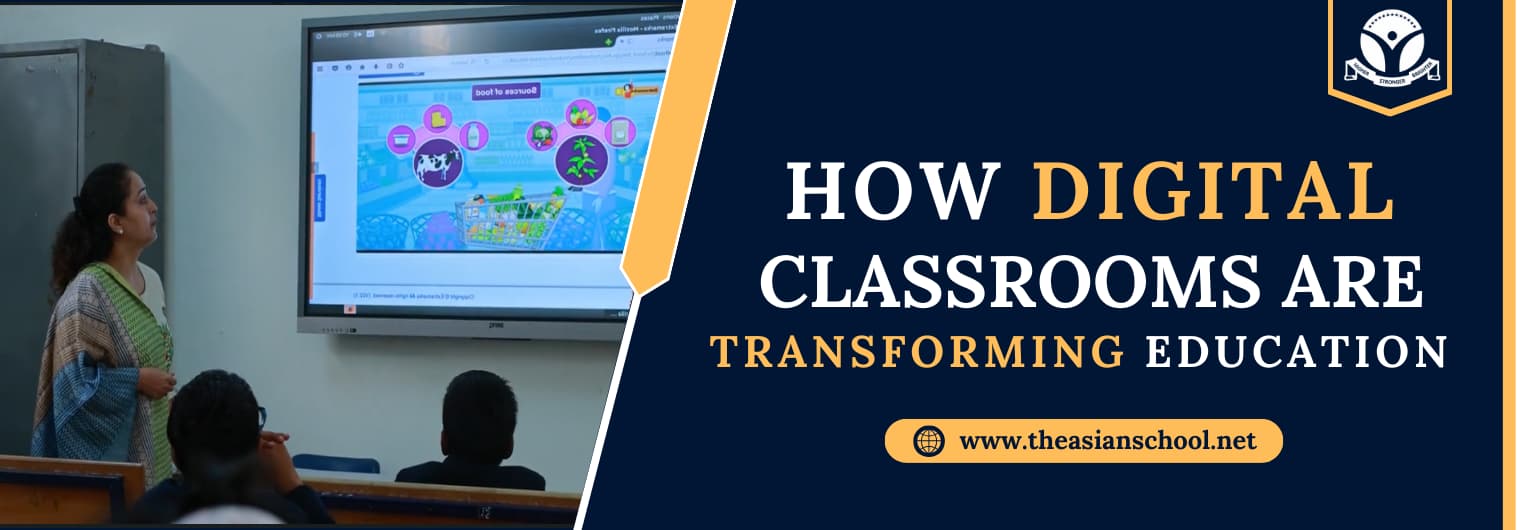Digital transformation in education has changed the way students learn and teachers teach. Digital classrooms are one of the key examples of this change. Teachers use technology to create lessons that match each student’s learning style. Also, students can ask questions or get help more quickly. Several fun means of educational tools are used, such as video games, learning apps, and computers, to make learning more interesting for kids. With technology, it is simple to organize things like grades, timetables, and communication between teachers and students. Through this blog, we will understand the key features of digital transformation in education, its benefits, and more.
What is Digital Classrooms Transformation and Its Key Features?
In the realm of education, digital transformation plays a key role. It involves the implementation of digital technologies in teaching, learning, and other academic activities. Through digital change, teachers upgrade their learning methods, educational tools, and improve the overall learning experiences of students. As per the leading schools in Dehradun, such digital transformation has improved the interaction between students and teachers.
Here are some of the key features of digital classrooms:
- Collaborative Learning: One of the key benefits of digital learning is that it encourages teamwork through discussion forums, online group projects, and sharing documents.
- Engaging Learning Channels: Digital classrooms incorporate tools like tablets, e-learning, and smartboards, which make the lessons more interesting and fun.
- Remote Access: If students miss out on any of their concepts, they can access lectures, study materials, and other assignments from anywhere in the world.
- AI-Powered Approach: AI is one of the leading tools for education. By using this, teachers can tailor lessons based on the students’ requirements.
- Virtual Reality: Students can explore a range of ancient sites in their digital classrooms through 3D models and virtual science experiments.
Key Benefits of Digital Classrooms in Education
Digital classrooms come with a range of benefits. These include:
1. Improving teaching and learning efficiency
New technologies like e-learning, AI, and digital learning tools allow teachers and students to access study materials easily. This makes it easy for teachers to provide the lessons and motivates students to study on their own and interact with these resources effectively. It helps to improve the overall learning experience, including those in a residential school in Dehradun.
2. Personalizing the learning experience
Technology in education helps to create customized learning programs that align with each student’s individual requirements and learning speed. Due to smart platforms and artificial intelligence, teachers can track how students are progressing and make adjustments to the study material. This makes sure that each student gets the support they need, even if they are in a residential school or girls’ boarding school in Dehradun.
3. Expanding access to education
Digital tools allow students to learn anytime and anywhere through online platforms. This means that students, even those who live in remote areas or are without access to traditional schools, can continue their education. It helps to make more equality in access to education, so learning can continue without interruptions.
4. Enhancing collaboration and connection in education
Students, teachers, and parents can stay connected through digital transformation. Online collaboration tools like Google Classroom, Microsoft Teams, or learning management systems (LMS) allow information, documents, and communication to be shared at any time, from anywhere. In schools in Dehradun, students and teachers have a great connection due to digital classrooms.
5. Optimizing educational costs and resources
Digital tools are reducing costs related to printing, textbooks, and other learning materials. Instead of printing everything, schools can now share lectures, assignments, and resources online. Educational management software also automates many tasks like grading, managing student information, and handling administrative processes. This saves time and resources.
6. Improving digital skills for teachers and students
As education moves towards digital tools, both teachers and students are learning how to use technology. These digital skills not only improve teaching and learning but also prepare students and teachers for future careers in a digital world. This is true for all schools, including a residential school in Dehradun.
Challenges and Solutions in Implementing Digital Classrooms
Apart from its benefits, digital classrooms also face some challenges. Here is an overview:
- Access to Technology: Not every student has the same access to digital devices. In schools, this issue can be solved by providing shared devices like school tablets. They can also offer internet at reduced rates, or create public learning spaces where students can come and study.
- Teacher Training: To make sure digital classrooms are successful, teachers need to be skilled in using technology. Schools must invest in training programs so that educators can effectively use digital tools and resources in their lessons.
- Managing Screen Time: Spending too much time in front of a screen can be harmful. It is more risky for young students. To handle this, schools should combine digital learning with traditional classroom activities to make sure students stay healthy and focused.
- Reluctance to Change and Adapt: Digital classrooms in schools in Dehradun require changes in how teachers teach and how students learn. However, not everyone is ready for these changes. Many teachers in schools prefer to use traditional methods instead of adopting new technology. A lack of motivation or fear of change can slow down the process of digital transformation.
- High Initial Investment Costs: Digital classrooms in schools involve a lot of costs. It includes buying new technology, devices, and management software. For many schools, particularly those that are public or located in poorer areas, these high costs are a significant challenge. Although governments have supported some programs to provide funds to such institutions.
- Data Security and Privacy Concerns: When schools move to digital systems, there are concerns about keeping students’ and teachers’ personal information safe. Handling, storing, and using personal data in a digital world can be risky if schools do not have strong security measures in place. Therefore, schools need to strengthen their overall security landscape to avoid such concerns.
Conclusion
Digital classrooms are not temporary, they are here to stay and represent the future of education. These classrooms offer a more engaging, personalized, and accessible way for students to learn and make sure that they receive the best education. Several schools in Dehradun have opted for digital classrooms to enhance the learning experience for students.
The Asian School is the leading boarding school in Dehradun that helps students excel in their academics by incorporating a range of digital tools into their daily routines. Here, students not only learn through books but also experience a hands-on and practical learning approach. Enroll now and experience the power of digital classrooms.











